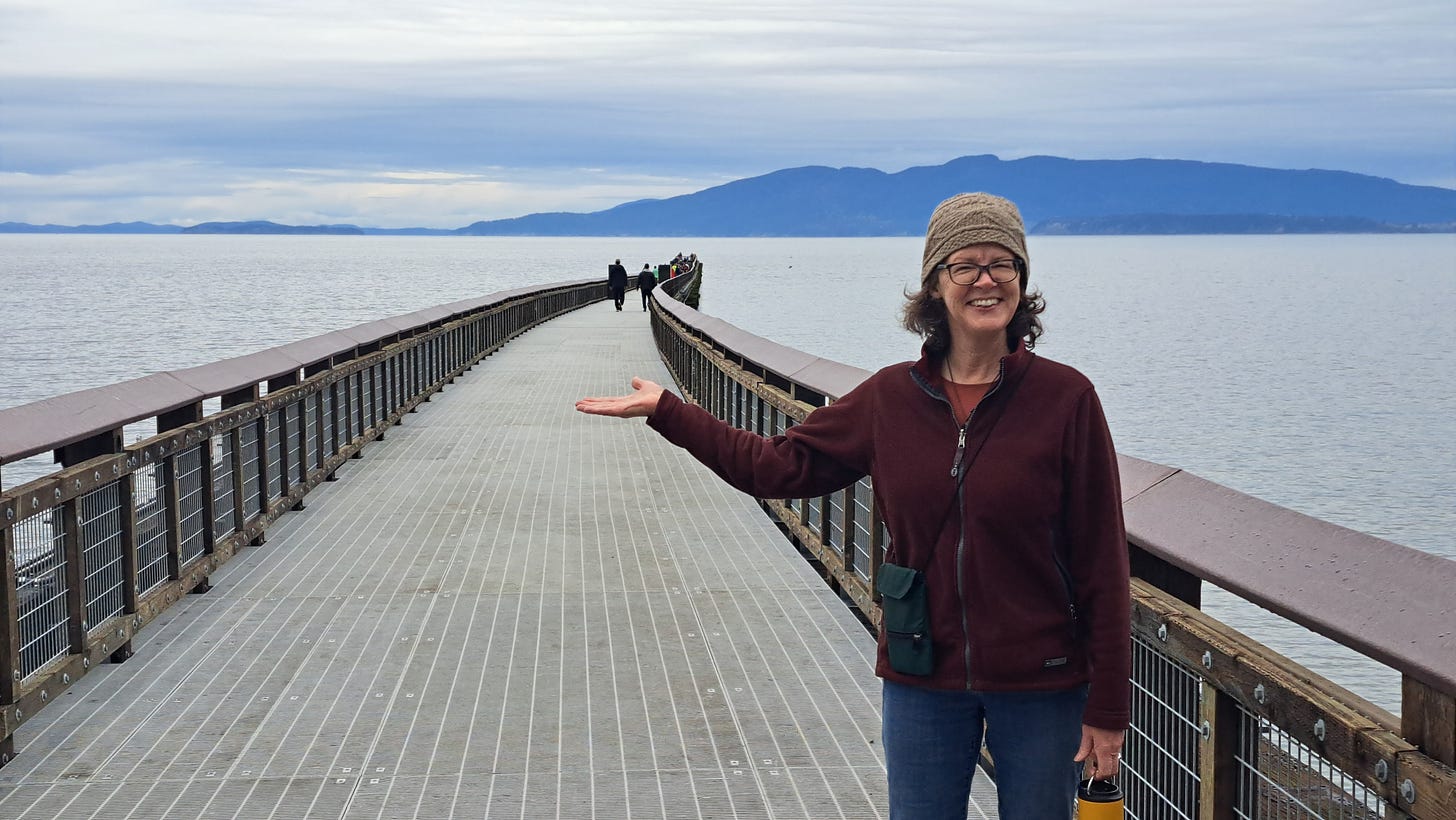Little Squalicum Pier
The longest pedestrian pier in Washington just opened in Bellingham
Built in 1912 to handle cement products from a nearby industrial plant, the 1,248-foot-long pier became the longest pedestrian pier in Washington when it opened to the public a few days ago. Yesterday, Kris and I desperately needed a look-see, so despite a little rain we trotted out to the end to be among the first. What a feat! The official ribbon-cutting happens April 26th at 3:00 pm.
The retrofit design is pleasing and functional, with added lighting powered by wind and solar apparently in the works. It’s accessible from Little Squalicum Beach, and from the new salmon-friendly estuary restoration project and trail enhancements completed just last year. The view is exceptional. And lordy be, the old structure was still stout enough to be saved. Given how old it is, it could even land on the National Historic Register. And who can guess what something like this would have cost in 2025 if built from scratch?
After its commercial use ended in 1987, many of us trail geeks began eyeing the pier as an ideal terminus for the long-proposed Bay-to-Baker Trail, a 74-mile concept that begins at Bellingham Bay, of course, and ends at Heather Meadows above the Mount Baker Ski Area. To see this major chunk of the vision finally come to fruition actually fired me up with shot of endorphins I think I’d been saving up for decades.
To reach the pier (open 6:00 am to 10:00 pm), you can jockey for a parking spot at the small lot on West Illinois Street near Marine Drive (or bus or bike there), then hike a quarter mile to the pier. Or park at the far west end of Roeder Avenue (where the kayakers launch) and walk the beach about the same distance to the pier, albeit not at high tide.
Beyond the pier, Bellingham has made some great strides in building a major chunk of the Bay-to-Baker through town. Everson, Maple Falls and Glacier have had their own sections in place for years. Now can we just get the county moving on the rest of corridor? Or at least the low-hanging fruit, by adding bits to what already exists. Completing the Maple Falls to Glacier segment would seem to be a no-brainer. Then maybe Dewey Valley to wherever, perhaps utilizing some undeveloped county rights-of-way and other public lands to get it rolling.
There are also opportunities to establish a route through at least part of the National Forest above Glacier, even if the crazy politics going on these days might delay immediate progress. But the concept for the trail is too darn good not to happen. I might even go so far as to say it’s inevitable . . . some day. If that’s the case, why don’t we commit to a bit more progress in 2025-26 and get ‘er done!




